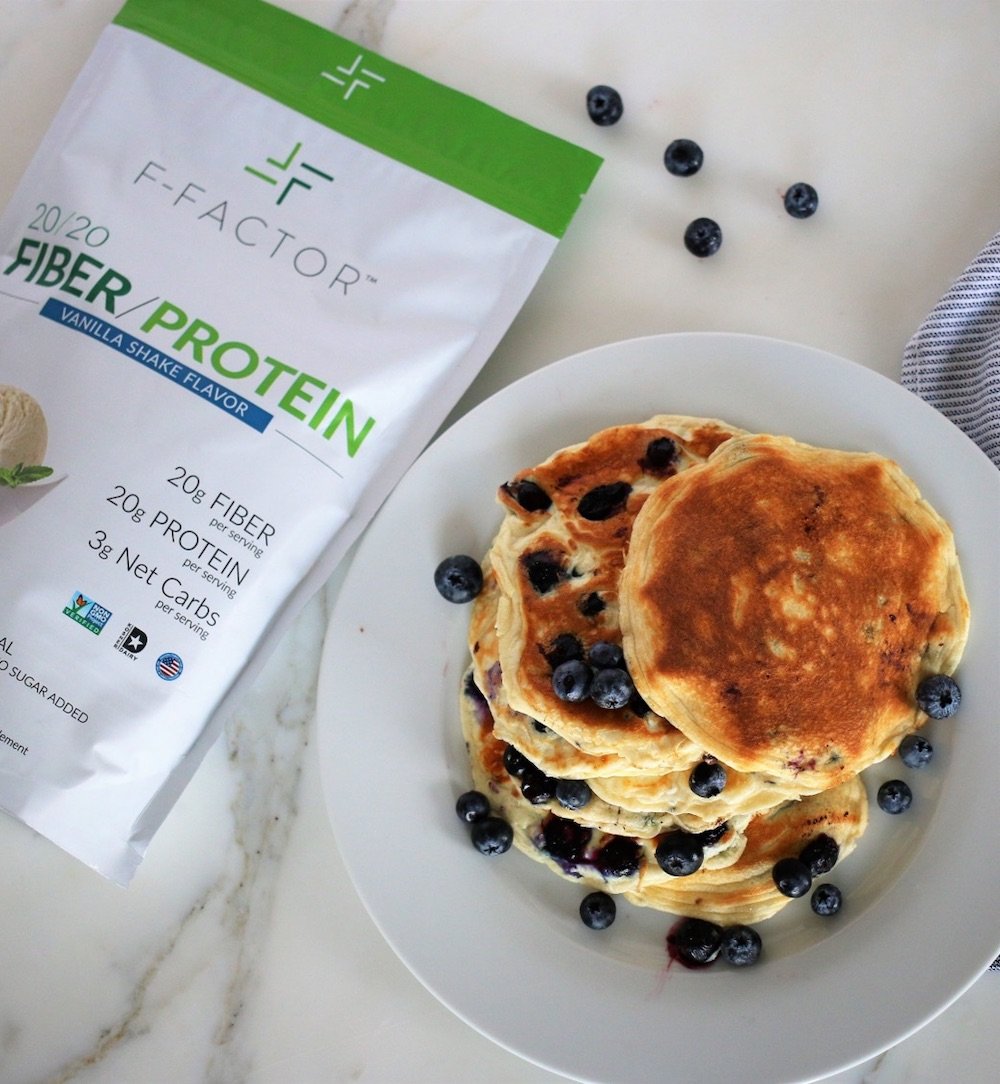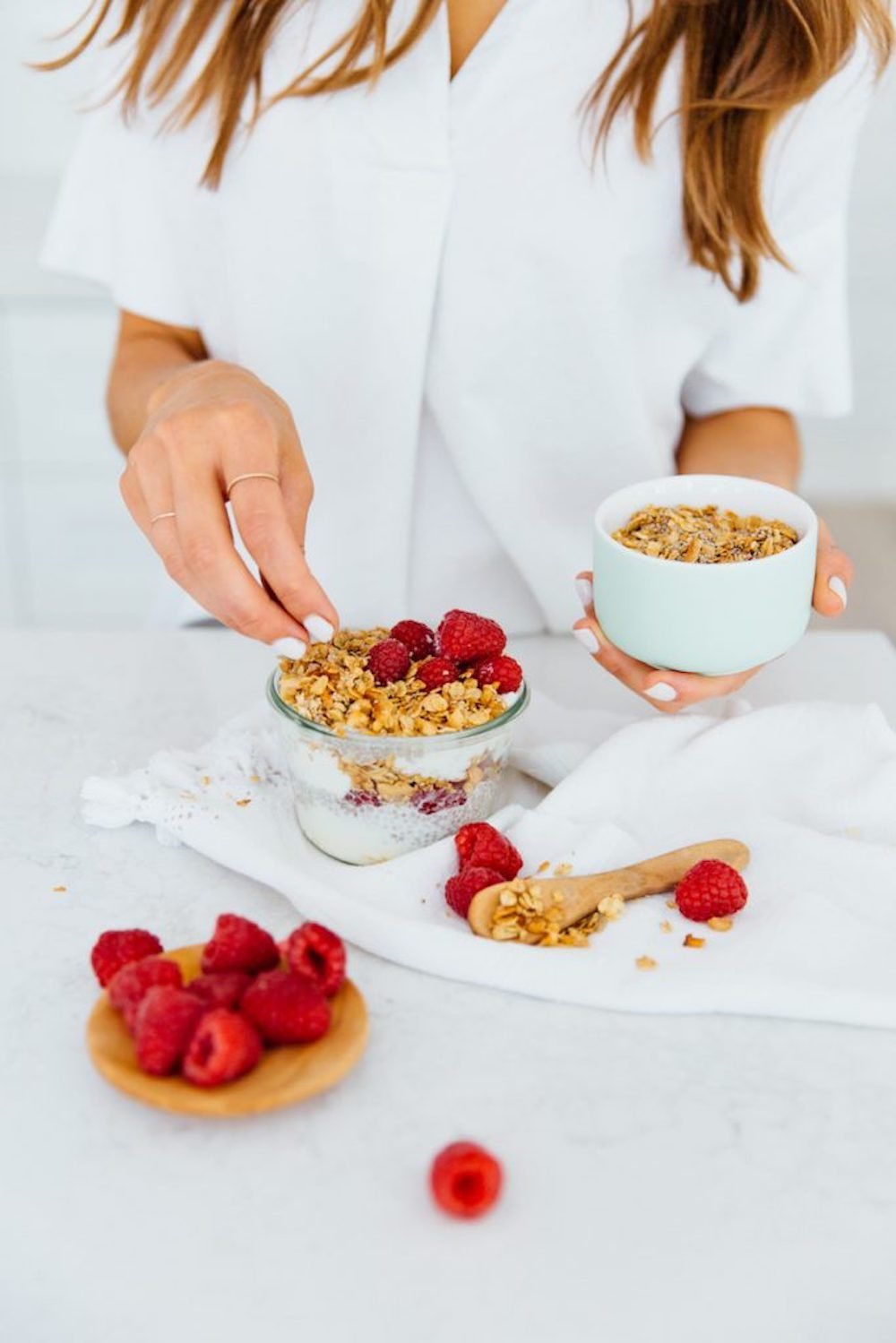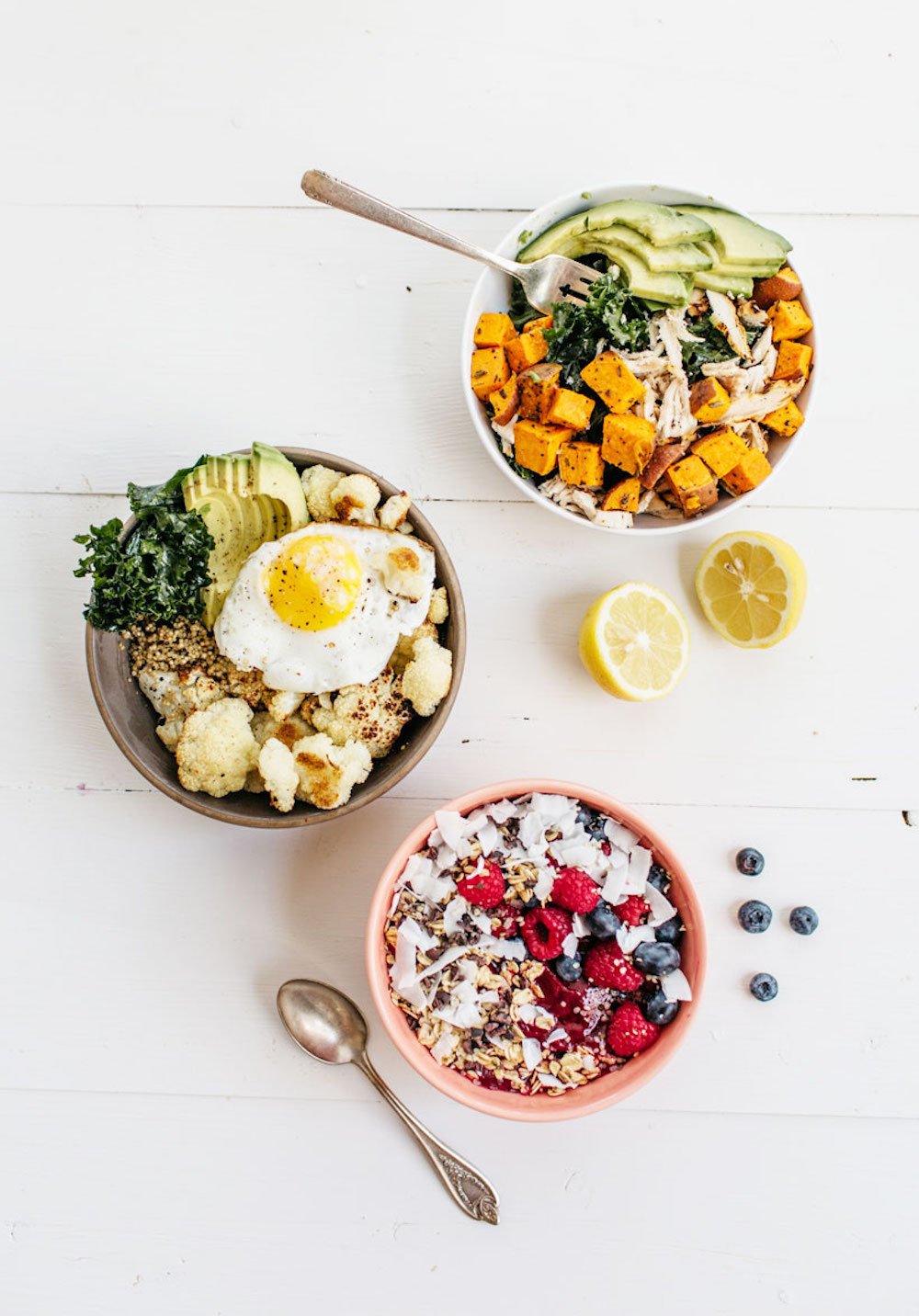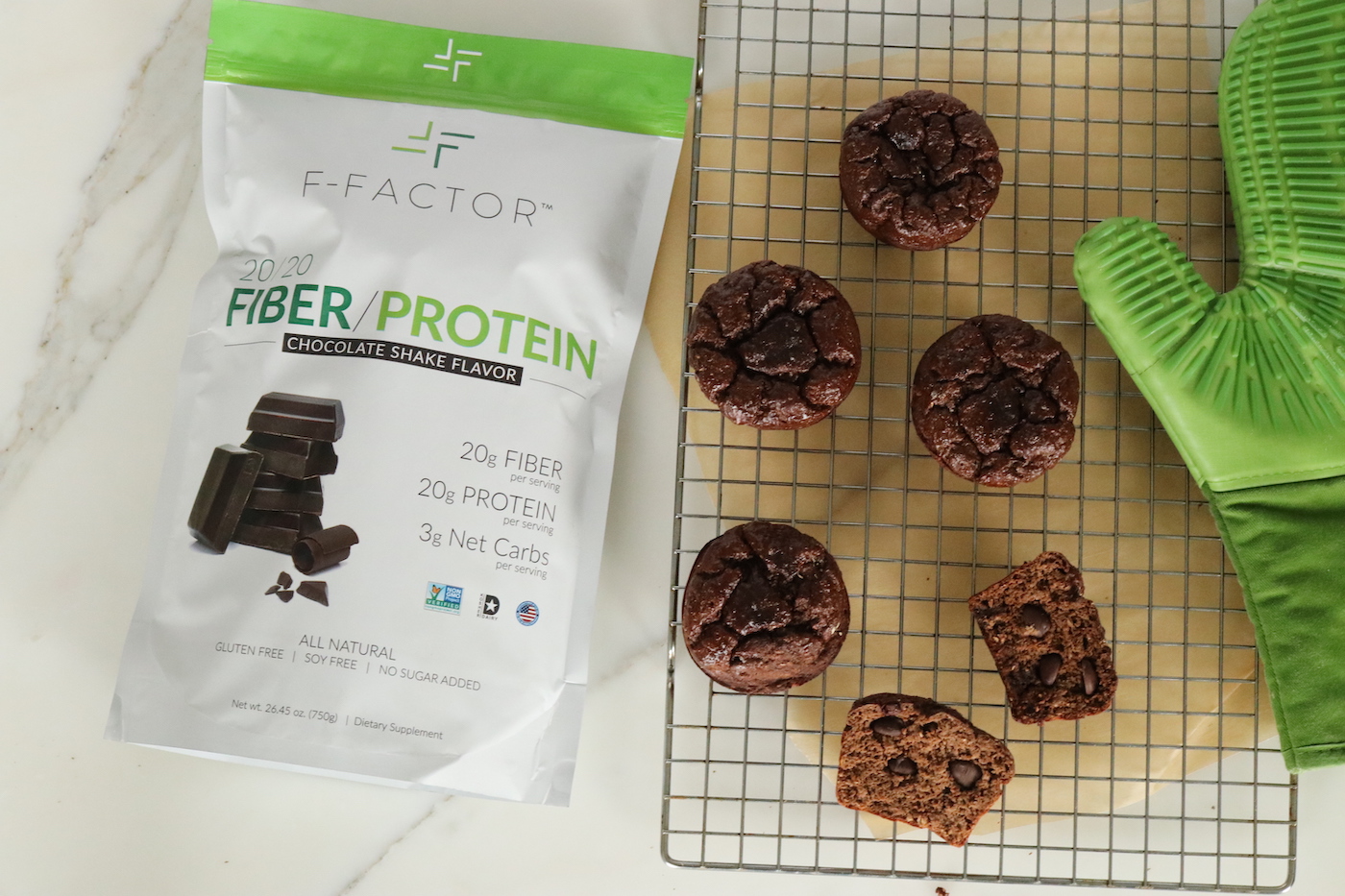When it comes to healthy eating, we’re all about a balanced approach that fills our plate with delicious and satisfying foods to keep us energized all day. And while most fad diets have their moment then fade away, The F-Factor Diet is one that has stood the test of time, and for good reason. But you might be wondering: “What is the F-Factor diet?”
Its approach focuses on combining protein and fiber, the idea being that this particular combo keeps you feeling full throughout the day, eliminating the deprivation that most people experience on traditional “diets.” It’s no wonder that celebs like Katie Couric, Megyn Kelley, and even Miss Universe swear by the plan, likely because it doesn’t require you to ban carbohydrates, proteins, fats, or even alcohol. Meaning: you can actually have a social life without falling off the wagon.
With F-Factor, the proof is in the pudding—it’s a nutritionally sound approach to eating for life that actually gives you more choices for what to eat while trying to lose weight, not fewer.
At its core, the F-Factor Diet is rooted in a basic scientific understanding of anatomy and physiology that its founder, Tanya Zuckerbrot studied for over 20 years in her career as a Registered Dietitian. Since F-Factor has recently undergone a resurgence (we’ve seriously been hearing about it everywhere lately) our curiosity led us straight to the woman herself, who graciously gave us the full scoop.
 image by Robert Caplan for the New York Times
image by Robert Caplan for the New York Times
How Did The F-Factor Diet come about?
The F-Factor Diet was a byproduct of my early work as a Registered Dietitian when I acted as an extension of the medical team of clinical patients with conditions like cardiovascular disease and diabetes. At the time my job was to create meal plans that would lower the cholesterol of cardiovascular patients or, in the case of diabetics, help to manage their blood sugar levels. Both patient populations received versions of high fiber diets because of fiber’s ability to lower cholesterol and manage blood sugar levels. The patients got healthier—cholesterol improved, sugars were better managed, and unexpectedly, across the board, all of these patients lost weight. The clients were living their lives normally, enjoying meals at their favorite restaurants, drinking alcohol, and getting healthier in the process.
What I had not anticipated was that by prescribing so much fiber for the clinical benefits, these patients were simply feeling fuller throughout the day on fewer calories, which led to weight loss without hunger. Friends and colleagues of theirs noticed too and began to call in, requesting diets for themselves, but for the weight loss benefits purely, not to manage their sugars or cholesterol. This was the birth of the F-Factor Diet and the practice continued to grow from there.
What is the F-Factor Diet?
This is clearly not just another ‘fad diet’. How does it work to produce such amazing results, without a huge change in lifestyle?
The F-Factor Diet is a sustainable approach to permanent weight loss and optimal health. The general concepts behind the program explain why it is able to such amazing results (people can expect to lose up to 15 lbs. in the first month!) without a huge lifestyle change.
Where most diets are based on deprivation, (telling you to cut out certain foods)the F-Factor Diet is about what foods to add to your diet in order to lose weight. This makes F-Factor both sustainable and liberating, which is why people succeed and stay on it long-term. F-Factor works because of fiber—the secret nutrient for losing weight without hunger. Fiber is the zero-calorie, non-digestible part of a carbohydrate that adds bulk to food.
Fiber, specifically, is essential to success on the F-Factor Diet, as it allows you to eat the carbohydrates necessary for energy without gaining weight. It swells in the stomach, absorbs and removes fat and calories, and boosts metabolism. When you follow a diet rich in fiber you feel full after eating—so you’ll generally eat less throughout the day.
Also, fiber is always paired with protein. Clinical evidence shows that fiber and protein have a high satiety benefit in calorie-controlled diets and in weight reduction. The combination of fiber and protein keeps you feeling full, for the longest period of time, on the fewest calories. The fuller you feel after a meal, the less likely you’ll be to overeat at the next meal; and therefore, the more likely you’ll be to lose weight.
Fiber and protein at every meal make losing weight no big deal!
On F-Factor, you eat 4 meals per day and follow this pattern at each meal. F-Factor dieters are encouraged/aim to eat 4 meals a day—breakfast, lunch, snack, and dinner, at 4-5 hour intervals. What most people don’t know is that when your body is deprived of food for many hours between meals, it starts conserving fuel and burning fewer calories to protect itself from starving. Your metabolism slows down, therefore inhibiting weight loss despite reduced caloric intake. Also, blood sugar levels begin to drop within two hours of eating. Low blood sugar can produce sudden hunger pangs, which can trigger bingeing and food cravings. Following the F-Factor pattern with high fiber foods makes it easy to lose weight without hunger.
What is The F-Factor Diet Eating Plan?
Key aspects of the eating plan:
F-Factor works because unlike other diets, you’re not hungry throughout the day, and it’s sustainable. F-Factor is based on 4 disruptive principles that are counterintuitive to everything we believe about the weight loss space:
- Eat carbs. The right carbs are filling, low in calories, and boost metabolism
- Dine out. On F-Factor you can dine out from Day 1 as no menu is off limits!
- Drink alcohol. Dieting and social drinking can go together as a happy, healthy lifestyle.
- Workout less. On F-Factor you’ll shed pounds and build lean muscle without spending hours at the gym.
Therefore, while the F in F-Factor stands for fiber, which allows for weight loss without hunger, it also stands for freedom.
On F-Factor, you have the freedom to dine out anywhere or cook for yourself if you want. You have the freedom to drink alcohol and more free time too since life with F-Factor doesn’t require you to spend hours at the gym.
Why the F-Factor Diet Is Different
What sets F-Factor apart from other diets?
The overarching key areas in which F-Factor is different than other diets are:
- Omission vs addition: Most diets are based on omission—to attain weight loss, certain foods like carbohydrates or fats, or ways of life, like dining out or drinking, are omitted. The problem with this is that it leaves dieters feeling deprived and dissatisfied. F-Factor is based on addition—you add fiber into your diet to lose weight, so there are no feelings of hunger and denial, which often causes dieters to fail.
- It’s liberating: F-Factor is designed to fit seamlessly into peoples’ lives so that they can stick to the plan, and the plan becomes their new normal.
At its core, F-Factor is all about education. It teaches people how to eat for life, and how to maintain their weight loss (which corrects the fundamental issue of fad diets). With most weight loss plans, weight loss slows and becomes more difficult as the weight comes off, because metabolism slows. On F-Factor, the weight loss continues and does not plateau because the fiber continues to rev up the metabolism. People on other diet plans tend to get discouraged and give up when their progress slows, on F-Factor there is no need to feel discouraged, which also adds to it being a sustainable way of life.
Describe the phases of the F-Factor plan. What is allowed on the meal plan for each phase?
There are three phases of The F-Factor Diet—jump start your weight loss, continued weight loss, and maintenance—We call these Step 1, Step 2 and Step 3. As you progress from Step 1 to Step 2 to Step 3 you are adding additional servings of carbohydrates each day to your diet.
Step 1: Jump Start Your Weight Loss
The purpose of Step 1 is to boost weight loss immediately—the only carbohydrates allowed are a high-fiber cereal, high-fiber GG crackers, a serving of fruit, F-Factor 20/20 Fiber/Protein powder, and F-Factor bars. Step 1 of the diet is meant to boost weight loss and help ease you into the diet. It requires that you cut out certain foods for only 2 weeks.
Phase 1 Guidelines:
- Three servings of carbohydrates/day. (1 serving of carbohydrates = 15g of carbs).
- Aim for 35 grams of fiber and less than 35 grams of net carbohydrates per day.
- During this phase starches and starchy vegetables, more than one serving of fruit, most dairy, and medium- to high-fat meats are to be avoided.
After being on Step 1 for two weeks, you graduate to Step 2 and add three servings of carbohydrates to your step 1 eating plan.

Step 2: Continued Weight Loss
Step 2 mimics Step 1 for the most part; however, this section of the diet calls for three more servings of carbohydrates a day. The choice of the carbohydrate is up to you. You can add more fruit, pasta, a bagel, etc.—it’s all up to you. These choices make this diet so incredibly easy and manageable. You can vary what you eat while following the plan. After finishing Step 2, you now know which foods are fiber-heavy and how to navigate a healthy diet.
Step 2 Guidelines:
- Six servings of carbohydrates/day. (1 serving of carbohydrates = 15g of carbs).
- Aim for at least 35 grams of fiber and less than 75 grams of net carbohydrates per day.
- Because you can have 3 additional servings of carbohydrates here you can add starches and starchy vegetables in.
Stick to a Step 2 eating plan until you reach your goal weight before moving onto Step 3.
Step 3: Maintenance-Eating for Life
Step 3 adds up to three more servings of carbohydrates to what you have been doing in Step 2. By the time that you reach Step 3, you know how to navigate eating in a restaurant or a grocery store, and how to prepare your own food.
Step 3 Guidelines:
- Nine servings of carbohydrates/day. (1 serving of carbohydrates = 15g of carbs).
- Aim for at least 35 grams of fiber and less than 125 grams of net carbohydrates per day.
- Step 3 is just like Step 2, but add three more servings of carbohydrates.
Remember, you can always go back to Steps 1 and 2 if you want to lose more weight.
What changes do people tend to notice with each phase?
People see and feel results after as little as 1 week of following the program. Not only does weight loss occur in the very first week, but many clients also report improved sleep and energy, laxation, and feel empowered to stick to the plan.
The average weight loss after one month on the program is 8-10 pounds for women, and 15-20 pounds for men.
If followed exactly (no cheating), one can expect to lose four-six lbs in the first two weeks on Step 1. In addition to weight loss, you can expect to have improved your metabolism, experienced fewer mood swings and feelings of fatigue, slept better, felt less bloated, and had fewer cravings for carbohydrates. When you add more carbohydrates in both Steps 2 and 3, you will notice an increase in your energy levels as well as additional weight loss.
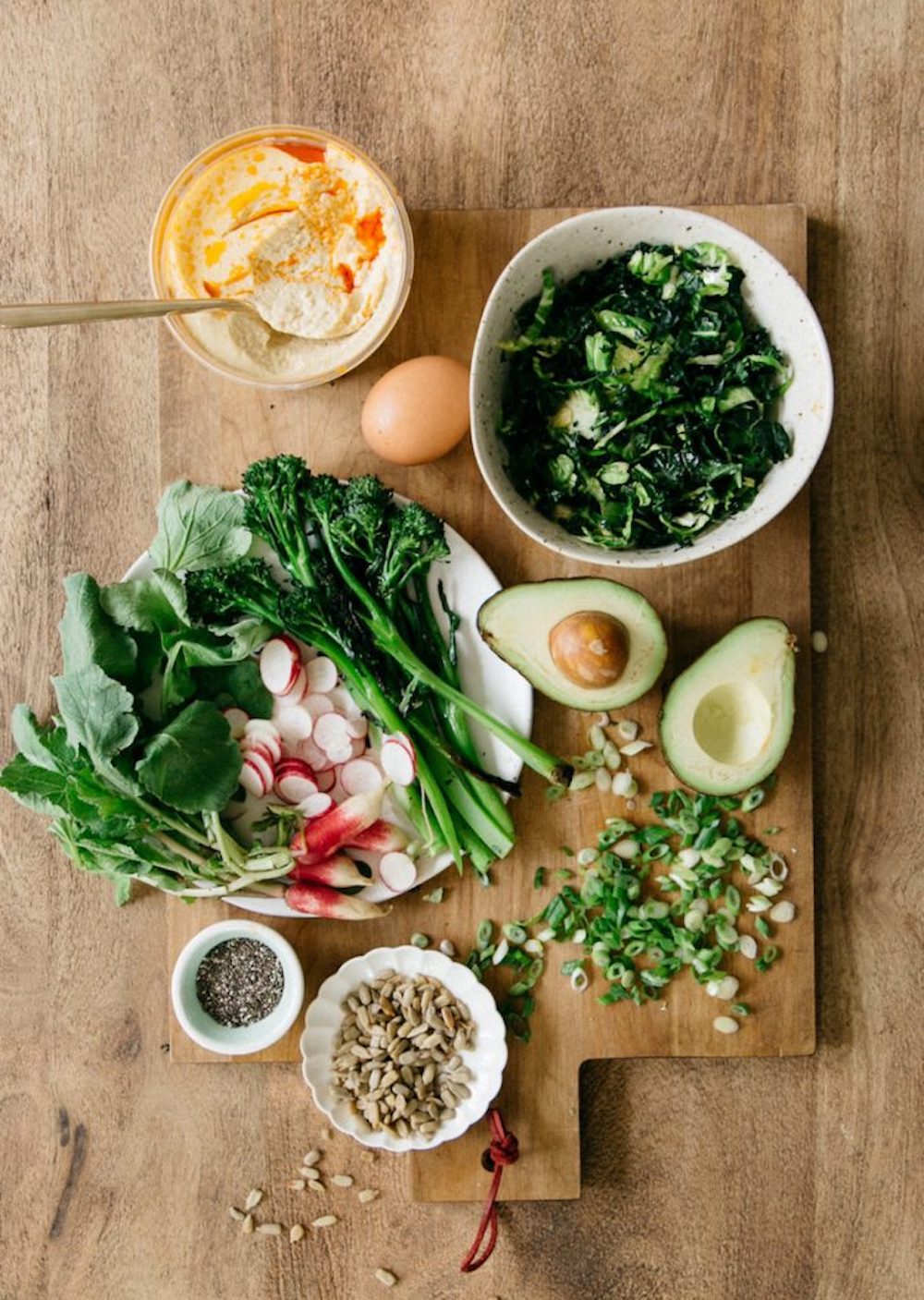
Fiber = Your BFF
Explain the superpowers of fiber and the benefits one can reap by adding more fiber into a diet?
Fiber adds bulk to food without adding calories, which is why high-fiber foods are great for dieting. It also swells in the stomach, slows digestion, and boosts metabolism, and all this combined to make losing weight healthier and easier. What really gives fiber its miracle status is the way it soaks up and removes fat and calories in the stomach before your body can absorb them. Incredibly, the fiber found in delicious, nutritious, filling carbs does what no other food can—it actually makes fat and calories disappear!
Fiber is the zero-calorie, non-digestible part of a carbohydrate that adds bulk to food. It has major health and wellness benefits, and is key for weight loss and management.
Other benefits of eating a fiber-rich diet:
- Increased energy: Eating fiber and protein together keeps blood glucose levels steady, providing your body with sustained energy.
- Flatter stomach: Eating a high-fiber diet helps you have complete and regular bowel movements. Fiber increases stool bulk, which helps prevent constipation, bloating and can offer relief from irritable bowel syndrome.
- Clearer skin: Fiber soaks up toxins in the blood and eliminates them through the digestive tract instead of your pores, producing brighter, clearer skin. Many fiber-rich fruits and vegetables are rich in antioxidants that help fight aging.
- Improved sleep: Eating refined carbs late in the day cause your blood sugar level to peak and then crash during sleep, which is why some people get up in the middle of the night. Eating foods rich in fiber helps keep blood sugars steady, which in turn promotes undisturbed rest.
Favorite fiber-rich foods?
Fiber is found in all sorts of foods. Favorite fiber-rich foods include:
- F-Factor 20/20 Fiber/Protein Powder: It is much higher in fiber than other protein powders (most whey protein powders have 1-2g fiber per serving, vegetable protein powders have ~9g, and this powder has 20g)
- Fruits: bananas, oranges, apples, mangoes, strawberries, raspberries.
- Vegetables: generally, the darker the color, the higher the fiber content. Fill up your shopping cart with: carrots, beets, broccoli, collard greens, swiss chard, spinach, artichokes, potatoes (russet, red, and sweet).
- Beans & Legumes: Beans and legumes are flavorful, fiber-filled additions to salads, soups, and chilis. Navy, white, garbanzo, kidney, peas, or lentils are all healthy choices.
- Breads & Grains: GG Crackers, whole grain bread, Wheat Bran, or other high fiber cereals.
Cooking while on the F-Factor Diet
Tell us about your F-Factor products.
I am so proud of my products! My F-Factor 20/20 Fiber/Protein Powder is really a hero ingredient for anyone looking to manage their weight or improve their health. It is completely unlike anything else available today—the powder has three times more fiber than any other protein powder available to date. The “20/20” refers to the amount of fiber and protein in a serving—one serving (two scoops) packs 20 grams of fat-fighting fiber to boost metabolism, along with 20 grams of organic muscle-building protein, for just 150 calories. The powder is also gluten-free, soy-free, has no sugar added, and is all natural, non-GMO, and Kosher.
While it was originally intended for use in smoothies and shakes, it has quickly become a staple ingredient in people’s kitchens. It comes in both a chocolate and vanilla flavor, and can be used to enhance the nutrient density of countless dishes; everything from waffles to pancakes, cakes and cookies, ice cream, and muffins. I like to add them to coffee to make a delicious fiber-filled latte or use them in recipes like waffles and muffins to satisfy that sweet tooth.
What are your favorite go-to weeknight recipes?
Some of my favorite family dinner recipes are included in the new version of the F-Factor Diet Book, like zoodles with mozzarella-stuffed meatballs (YUM!) I also love making F-Factor Chili with a DIY toppings bar, and my go-to taco night. We add new recipes to our site regularly, too!
Some of my favorites include:
- Eggplant Parmesan Lasagna
- Waffles and Muffins made with 20/20 Fiber/Protein powder
- 10 Vegetable Soup
- Guiltless Chicken Parmesan
- Asian Sesame Snap Pea Salad
- BBQ Chicken Cauliflower Crust Pizza


